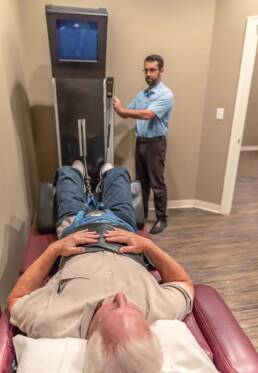It’s stressful enough when you’ve sustained a whiplash injury, with most occurring due to an auto accident. In addition to the insurance and possible legal implications, you also have to deal with the pain, which sometimes inhibits your normal daily routine.
It’s important to get the right treatment quickly to minimize the time that you’re dealing with the effects of the injury. Understanding your injury and how to effectively support your body helps accelerate your road to recovery. This essential guide will help you understand your whiplash injury and explore why you should include chiropractic care as part of your recovery plan.
Understanding a Whiplash Injury and Degree
Whiplash happens when your body sustains a shock that forces the head to have a rapid and forceful back-and-forth motion. The medical terms associated with whiplash are hyperflexion and hyperextension. These simply mean you’ve stretched your neck forward and backward further than it would normally go.
Like many other injuries, whiplash isn’t the same for everyone, and can range from an inconvenience to a medical emergency. There are four grades of whiplash injury, based on the severity of your symptoms. It’s important to understand the severity so that you can address it appropriately.
Grade 1
Grade 1 whiplash is generally marked by stiffness in the neck when trying to move your head. You may also experience tenderness when touching the area around the affected area.
Grade 2
A Grade 2 injury progresses beyond the initial pain associated with Grade 1, but will also include muscle spasms, swelling, and sensitivity when touched around the injury. You may also experience pain that radiates to your shoulders, back, head, and face.
Grade 3
Grade 3 starts impacting neurological function due to interrupting signaling pathways traveling to and from the brain. This may include numbness, tingling, muscle weakness, vision problems, and dizziness.
Grade 4
Grade 4 is an extension of Grade 3, but usually with greater severity due to a fracture or dislocation. You may experience nausea, irritability, fatigue, ringing in your ears, difficulty swallowing, or pain in your arms, legs, hands, or feet.
Whiplash Injury Stages and Treatment
There are two distinct stages to whiplash, requiring a different treatment approach to effectuate proper healing. First is the acute phase, which focuses on the initial inflammation in the affected areas. Treatment should focus on controlling and reducing that inflammation, including icing, stretching, and possibly gentle massage.
Once you’re past the acute phase and the inflammation is under control, you’re now into the structural phase. This is where the focus shifts to correcting structural shifts in your neck and body, such as herniated or bulging discs and damaged nerves, tendons, and muscles.
4 Ways Chiropractic Care Treats Whiplash
Chiropractic care for whiplash isn’t just about dealing with pain, though that is a substantial part. Rather, there are four distinct benefits of seeking chiropractic care quickly after sustaining whiplash.
1. Reduces Inflammation
One of the significant benefits of chiropractic care is its ability to help reduce inflammation throughout the entire body. When the appropriate signals cannot reach the proper areas it exacerbates inflammation. Further, chiropractic care helps reduce neuropeptides, which signal the body’s inflammatory response.
2. Relieves Pain
Many people seek chiropractic care for a whiplash injury. Simply dealing with inflammation will help reduce the amount of pain you experience. However, chiropractic adjustments have demonstrated a statistically significant increase in plasma beta-endorphin levels. This is a chemical the body naturally produces that helps block pain signals and is a key part of how chiropractic care provides immediate pain relief.
3. Restores Range of Motion
Range of motion is often impacted by whiplash due to inflammation, muscle strains, and structural shifts from the sudden forceful movements. Reducing any injury-related inflammation may restore some of your range of motion. However, any vertebrae or discs that are out of place will create further restrictions. Manual manipulation of the affected area will help resolve the underlying causes of restricted movement.
4. Natural Treatment Option
One of the concerns many people have regarding whiplash treatment is either invasive surgery or narcotic pain medication. Either one can significantly impact your daily function, making it difficult to work, care for your family, or enjoy your hobbies. Chiropractic care uses what the body naturally does to help solve your whiplash symptoms and accelerate your overall recovery.
Different Whiplash Treatment Approaches
Most people have a very narrow view of the treatment that chiropractors provide, normally thinking about how they “crack” a patient’s back. However, there are several treatment modalities and techniques a chiropractor may utilize while treating whiplash.
Spinal Manipulation
Most people associate chiropractic care with spinal manipulation and is one of the primary tools chiropractors use. What you may not know is that chiropractors have over 150 different manipulative techniques they can use to match your particular need. As your treatment progresses, they may change the technique used as they change from inflammation management to structural adjustments.
Electrical Stimulation
Electrical stimulation uses a mild electrical current that’s delivered to the affected area by two small electrode pads, This electrical current blocks the pain signals traveling from the injured area to the brain. This block helps relax strained and tense muscles, allowing more blood to flow to the area and aid in healing. Your chiropractor will know the proper placement and setting to achieve optimal results and assist with your recovery.
Manual Stretching and Resistance
Stretching and regaining strength in injured muscles and ligaments is critical any time you suffer a soft tissue injury. Most people suffering from whiplash don’t move as much as they did prior to the injury, which inhibits signals and healing nutrients from flowing through the body properly. Not only will your chiropractor carefully stretch the affected area in your neck, but they’ll also make sure your back is receiving the proper movement to optimize the flow of cerebrospinal fluid. This fluid is a critical part of the body’s healing process.
Trigger Point Therapy
Whiplash commonly causes trigger points, which are areas of tight muscle fibers. This is what you may feel as a knot in your back or neck, and can cause some of the pain related to whiplash. Trigger point therapy involves your chiropractor applying pressure with their fingers to the affected fibers, which helps them release and begin to relax.
Therapeutic Massage
While your chiropractor may deliver trigger point therapy, they may recommend getting more substantive massage therapy as part of your whiplash treatment. A licenced massage therapist delivers this deep tissue massage to help break up and prevent scar tissue from your injury using a method called cross-fiber friction. Massage combined with other treatment modalities provided by a chiropractor work synergistically to get you back to your daily routine more quickly.
Call (936) 756-3747 to schedule your complimentary Conroe area whiplash treatment consultation with the experts at Freedom Chiropractic.

Ready for a complimentary consultation? Get in touch today!
Much like an engineer, we focus on setting up your body to do the activities that you want to do most. An engineer would make sure a bridge could accommodate Houston traffic, and we will make sure your body can accommodate your favorite sport, family activity, or your next adventure.
Like this article? Spread the word!
Related Posts
April 23, 2024
Using a Chiropractor After a Car Accident
After a car accident, seeking chiropractic care is essential. Learn how Freedom…
December 27, 2023
Recovering from Auto Accidents: Why Seeking a Chiropractic Evaluation is Crucial
Discover the importance of immediate chiropractic evaluation after an auto accident in…
November 29, 2023
Relief Roadmap: Managing Post-Accident Headaches with Chiropractic Care in Conroe, TX
Experience relief from post-accident headaches and migraines at Freedom Chiropractic in…




